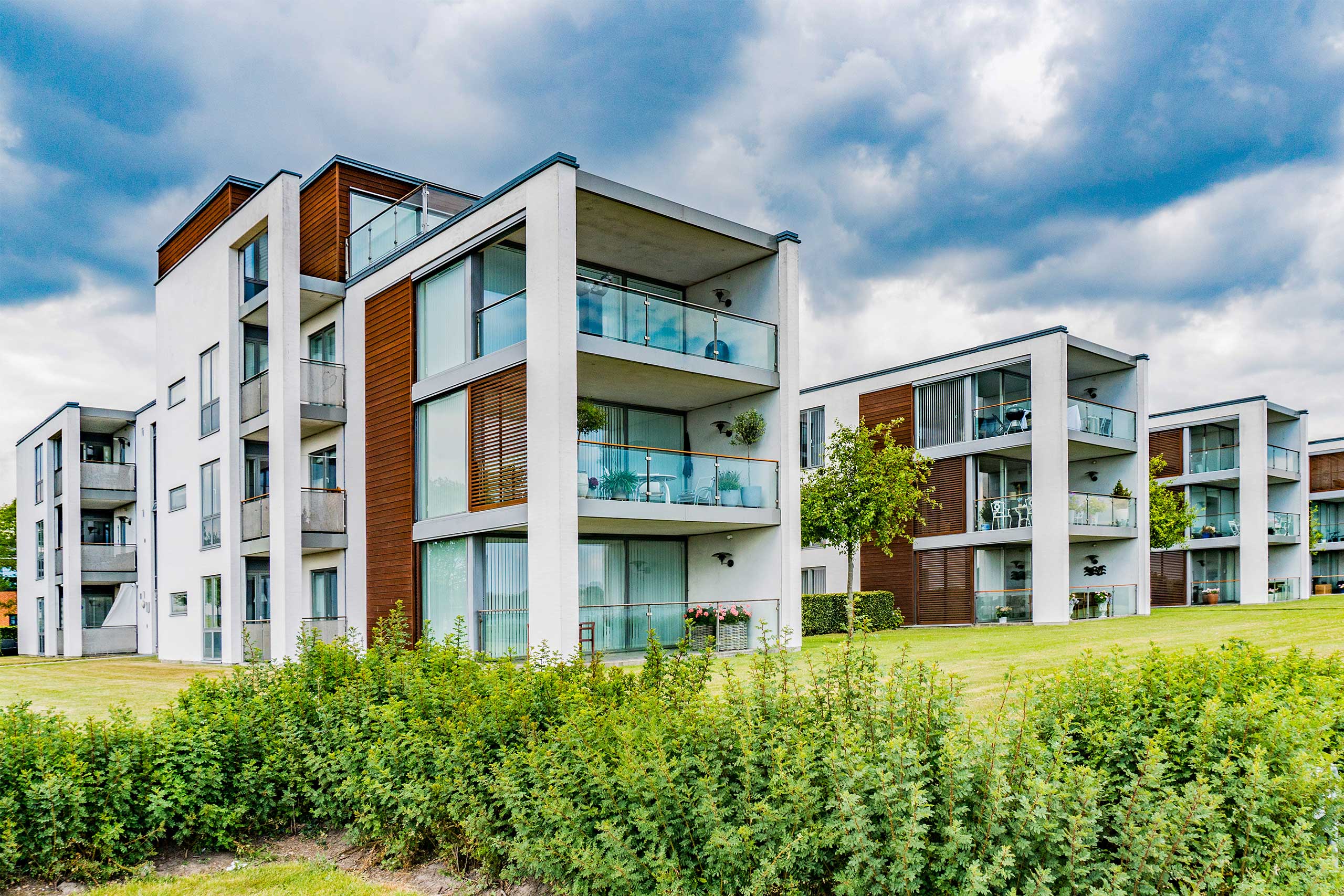Comprehensive Guide to Apartment Building Insurance: What You Need to Know
Owning or managing an apartment building comes with significant responsibilities. Apartment building insurance is vital for protecting your property, tenants, and bottom line against risks, such as physical damage, liability claims, and unexpected environmental hazards.
This guide outlines the key insurance coverages you need and considerations you should make as a commercial real estate owner, or multifamily property owner.
Property insurance: Safeguarding your physical assets
Property insurance protects your building and its contents against tangible damages from fires, storms or other insured natural disasters. It also can insure loss of rental income if your building becomes uninhabitable during repairs. Coverage essentials include:
- Physical damage from fire, flood, vandalism, and water damage, and more
- Loss of revenue coverage to compensate for rental income and other revenue streams during downtime
- Geographic-specific catastrophic risks, such as wind, earthquakes, flooding, convective storms, storm surge, and other weather events
To maximize property insurance benefits, conduct accurate building valuations to avoid being underinsured. Properly document and model potential catastrophic (CAT) exposures to prepare your portfolio for worst-case scenarios.
General liability insurance: Protecting against accidents
General liability insurance provides a safety net for property owners by covering legal liabilities arising from third-party incidents occurring on their premises. For example, if a tenant or visitor experiences an accident, such as a slip or fall, the policy helps cover associated legal costs to indemnify owner, potential policy settlements, and sometimes the injured party’s medical expenses. Here are the coverage essentials of a general liability insurance policy:
- Claims arising from slips, trips, and falls to third parties at the insured site
- Legal liability from significant incidents, such as fires causing tenant injuries or death
To ensure adequate coverage, identify any property-specific risk factors, such as crime rates or the presence of firearms or liquor sales. Ensure policies include endorsements for assault and battery, firearms, sexual molestation, contractual liability, and discrimination claims, and more.
Umbrella/Excess liability insurance: Extending your coverage
For additional protection, umbrella liability insurance extends the coverage limits of primary liability policies, such as general liability or employer liability. This type of insurance acts as a financial safety net, stepping in when the limits of your primary policies are exhausted.
For instance, in the case of a significant tenant injury claim or a large-scale disaster that exceeds the typical $1 million primary general liability coverage, an umbrella policy ensures you are not left financially vulnerable. This added layer of protection is particularly valuable for properties with higher exposure to risks, large locations, or portfolios with numerous locations. Here are some insights:
- Provides higher limits, tailored to the size, location, and asset class of your property
- Typical coverage ranges from $10 million for low-rise, garden-style apartments to $50 million+ for high-rise properties in major cities
To get proper coverage, assess your property’s size and location to determine its exposure to high-value claims. You should also consider the number of insured assets within your program.
Pollution insurance: Mitigating environmental risks
Environmental hazards can be costly and disruptive. Pollution insurance covers environmental risks, such as mold, oil spills, or HVAC contaminants, helping ensure you’re prepared for remediation, bodily injury, property damage and ensuring litigation. Here are some examples of what pollution insurance can cover:
- Investigation and cleanup of environmental hazards
- Protection from property damage and bodily injury claims
- Business interruption associated with stalled operations due to an environmental event
This is an essential element of apartment building insurance that can be easily overlooked if you aren’t considering the risks. Underground storage tanks (USTs) and contaminants in pools and saunas could also cause issues on your property.
Insurance for property managers: Defining responsibilities
If you employ third-party companies for property management, ensure they carry sufficient insurance to align with their responsibilities. By guaranteeing specific coverage is in place, you mitigate potential risks and enhance the overall safety of your property management operations. Here’s what to look for:
- Professional liability insurance for management errors or omissions (E&O) coverage, that aligns with property management indemnification obligations
- General liability insurance for on and offsite operations
- Workers’ compensation for property management staff
- Auto liability insurance, assuming their work includes a vehicle
It’s recommended that clear contracts specifying insurance requirements be established with any third parties, as insurance may not otherwise respond correctly. Compliance should then be monitored to ensure adequate coverage. Ownership and property management must identify whose liability coverage shall be primary for on-site liability exposures.
Directors & officers (D&O) insurance: Protecting leadership
D&O insurance shields executives and board members from lawsuits related to management decisions, such as allegations of breach of fiduciary duty. This type of coverage is particularly valuable for mitigating risks associated with financial missteps, decisions impacting shareholder value, or operational oversights. Here are a couple of its benefits:
- Legal defense cost coverage
- Protection from claims of mismanagement or oversight failures
Coverage helps ensure that leadership can focus on strategic management without fearing personal financial loss due to legal actions. Whether addressing claims of mismanagement, conflicts of interest, or regulatory non-compliance, D&O insurance is a vital layer of protection for key decision-makers against third-party accusations of financial loss.
Cyber liability insurance: Addressing digital vulnerabilities
Since we live in a digital age, more apartment operations are transitioning their business online. As a result, cyber liability has become an essential element of apartment building insurance to protect tenant and business data. Some high-risk areas include:
- Ransomware attacks and other cyber security attacks
- Breaches of tenant payment systems
- Exposure of sensitive information, like Social Security numbers, drivers’ licenses and bank account information for online payments
You never want to take any risks when it comes to the personal data of your tenants. It’s better to protect yourself and them with the help of cyber liability insurance. Not only that, but it will help your tenants feel more comfortable and confident when doing business with you.
Additional considerations for apartment building insurance
Contractor oversight is an essential component of risk management for apartment building owners. While your residential asset may not be undergoing a significant construction project, all assets have regular third-party vendors engaged for smaller jobs. Establish clear written and executed agreements that define the scope of work for any contractors working on your property. These agreements should mandate that contractors carry general liability insurance and name your property ownership, mortgagee, and property management as additional insured, on a primary non-contributory basis with respect to the work contemplated by their agreement. Doing so helps ensure that your property is protected against potential liabilities arising from the contractor’s work and reduce the likelihood of disputes. Vendors engaged for work on swimming pools and HVAC systems, for example, should also maintain contractor’s pollution liability insurance.
Another critical area is mortgage compliance for property ownership. Lenders often impose specific insurance requirements, including minimum coverage types and limits, as part of the commercial loan agreement. Property owners must review these requirements carefully and maintain compliance to avoid penalties, default, or breaches of contract. By proactively aligning their insurance coverage with lender expectations, they can safeguard their financial standing and meet all necessary obligations.
Is your investment covered?
Apartment building insurance is a critical investment in the longevity and success of your property. By understanding the key coverages and aligning them with your property’s unique risks, you can confidently protect your assets, tenants, and operations while planning for the unexpected.
For more information
We’re ready to help when you are. Get in touch and one of our experienced Baldwin advisors will reach out to have a conversation about your business or individual needs and goals, then make a plan to map your path to the possible.
This document is intended for general information purposes only and should not be construed as advice or opinions on any specific facts or circumstances. The content of this document is made available on an “as is” basis, without warranty of any kind. The Baldwin Insurance Group Holdings, LLC (“The Baldwin Group”), its affiliates, and subsidiaries do not guarantee that this information is, or can be relied on for, compliance with any law or regulation, assurance against preventable losses, or freedom from legal liability. This publication is not intended to be legal, underwriting, or any other type of professional advice. The Baldwin Group does not guarantee any particular outcome and makes no commitment to update any information herein or remove any items that are no longer accurate or complete. Furthermore, The Baldwin Group does not assume any liability to any person or organization for loss or damage caused by or resulting from any reliance placed on that content. Persons requiring advice should always consult an independent adviser.






